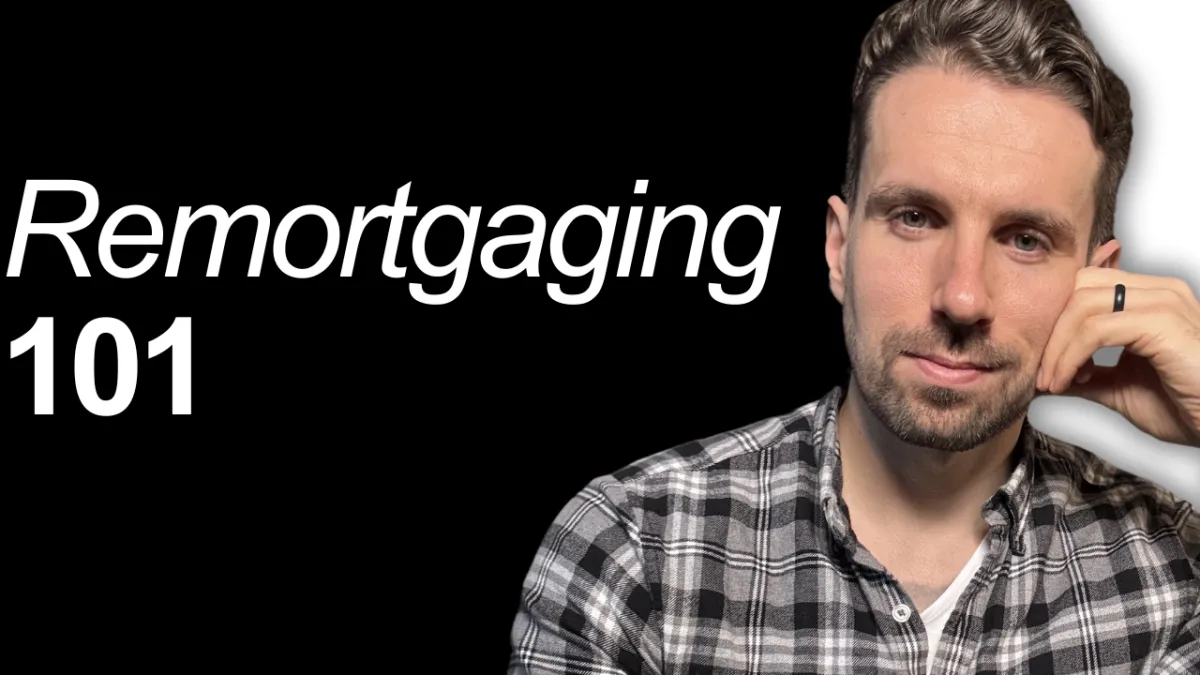Check out my YouTube channel for even more content HERE

Can Mortgage Brokers Give Advice on Remortgaging (NEW BROKER GUIDE)
Why Do So Many New Mortgage Brokers Overlook Remortgages?
When I first became a mortgage broker, I assumed the job was all about helping first-time buyers. I thought once the deal was done, that was it — job complete, on to the next.
But what I quickly realised is this: if you want to build a mortgage business with sustainability, scalability, and predictable income, remortgaging is not a side note. It’s a core part of your long-term success strategy.
Why Is Remortgaging So Crucial to Your Mortgage Business?
Ignoring remortgages is like throwing away golden opportunities. Most clients don’t understand when or how to remortgage. And if you’re not the one who reaches out at the right time, another broker will. That’s how you lose clients you worked so hard to win.
This isn’t just about profit. It’s about positioning. Are you the broker that’s only useful once — or are you their trusted advisor for life?
🎥 Watch This: How Mortgage Brokers Build Long Term Client Relationships
What Has Remortgaging Taught Me About Client Retention?
1. Why Is Remortgaging the Foundation of Long-Term Client Relationships?
When clients come to the end of their fixed-rate deal, most of them don’t even know it’s happened. If you’re the one who shows up and helps them navigate their options, you instantly shift from “the broker who helped once” to “my go-to mortgage person.”
The trust, loyalty, and referrals that come from that one moment are massive.
🎥 Watch This: Content Marketing in Mortgage Lead Generation
2. How Can Remortgaging Create a Predictable Income Stream?
Unlike helping a nervous first-time buyer, remortgage clients already know and trust you. The process is usually simpler, quicker, and if you systemise it, you can turn it into a repeatable revenue stream.
Think about it — instead of always chasing new leads, why not build a pipeline that brings previous clients back to you every few years?
3. Why Do Most Clients Not Even Realise They’re Overpaying?
I’ve had dozens of clients who didn’t even realise their fixed rate had ended. They’d slipped onto the Standard Variable Rate (SVR) and were overpaying by hundreds every month. They just didn’t know.
This is where you step in — not as a salesperson, but as an educator. Show them they’re overpaying, and they’ll never forget it.
🎥 Watch This: What Happens After CeMAP: Essential Training & Support for New Mortgage Brokers
4. Is Remortgaging Only About Getting a Better Rate?
Absolutely not. Sometimes it’s about releasing equity for renovations. Other times it’s about extending the term to reduce monthly costs. Every case is different — and that’s what makes it valuable.
You’re not just a broker. You’re a strategist. A problem solver. A trusted advisor.
🎥 Watch This: The Main Responsibilities of a Mortgage Broker
5. How Can Automation Improve Remortgage Conversions?
Top brokers don’t rely on memory. They use CRMs to set up email reminders, WhatsApp nudges, and annual review templates. These automated touchpoints are what keep clients engaged and coming back when it matters most.
Systemising your follow-up process is the secret to creating reliable income without burnout.
🎥 Watch This: The Must-Have Tools Every Mortgage Broker Should Be Using
What Should You Be Doing Today to Set Up for Remortgage Success?
Here are three powerful questions to ask yourself if you're serious about improving your remortgage strategy:
Are you setting reminders 6 months before fixed deals end?
Do you have automated emails or WhatsApp check-ins scheduled annually?
Are you educating clients about remortgaging as part of their journey, not an afterthought?
🎥 Watch This: 3 Steps to Closing More Mortgage Leads
What Is the Biggest Business Lesson I’ve Learned from Remortgaging?
Here’s the bottom line: Consistency beats creativity.
You don’t need to come up with flashy ideas or reinvent the wheel every day. You just need to show up — systematically and reliably — when it matters most. That’s what builds a business that grows with you, not one that burns you out.
🎥 Watch This: Mortgage Broker Career Guide: From CeMAP to a Thriving Business
Final Thought
If you’re a new mortgage adviser or even an experienced broker looking to create more stability in your business — don’t sleep on remortgages.
Be the broker who follows up, educates, and genuinely supports their clients beyond the first deal.
Because the truth is this:
“The best brokers don’t sell — they serve. And that’s why their clients come back.”
